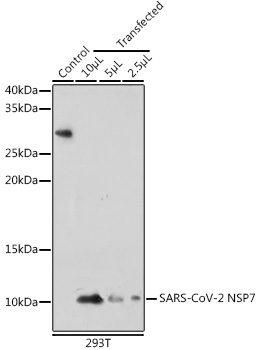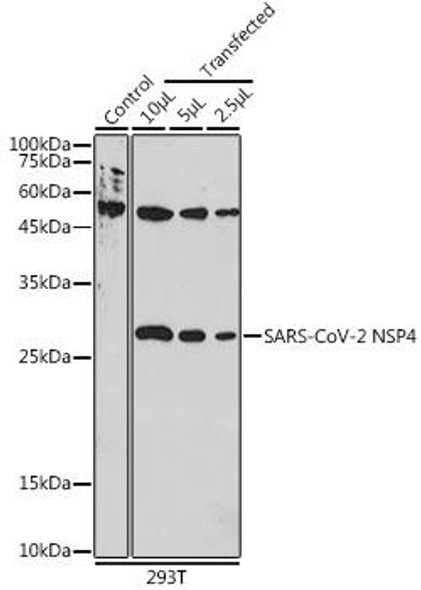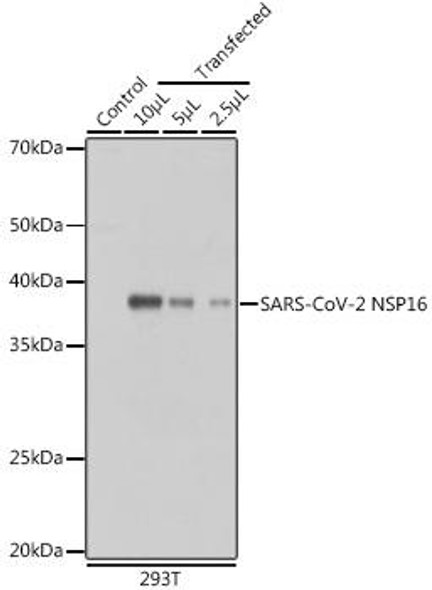Description
SARS-CoV-2 NSP7 Rabbit Polyclonal Antibody (CAB20201)
The Anti-SARS-CoV-2 NSP7 Antibody (CAB20201) is a crucial tool for research involving the NSP7 protein of the SARS-CoV-2 virus, which plays a key role in viral replication. This polyclonal antibody, produced in rabbits, is highly specific to SARS-CoV-2 NSP7 and has been validated for use in various applications, such as Western blotting and immunofluorescence.With the ongoing global pandemic caused by the SARS-CoV-2 virus, understanding the function and behavior of NSP7 is essential for developing effective treatments and vaccines.
This antibody enables researchers to detect and analyze the NSP7 protein in infected cells, providing valuable insights into viral replication mechanisms and potential targets for antiviral therapies.Overall, the Anti-SARS-CoV-2 NSP7 Antibody (CAB20201) is a valuable tool for studies focused on the SARS-CoV-2 virus, offering researchers the ability to investigate the molecular interactions and pathways involved in viral replication, ultimately contributing to the development of strategies to combat COVID-19.
| Product Name: | SARS-CoV-2 NSP7 Rabbit Polyclonal Antibody |
| SKU: | CAB20201 |
| Size: | 20uL, 100uL |
| Isotype: | IgG |
| Host Species: | Rabbit |
| Reactivity: | Human |
| Immunogen: | Recombinant fusion protein containing a sequence corresponding to amino acids 1-83 of coronavirus NSP7 (YP_009742614.1). |
| Sequence: | SKMS DVKC TSVV LLSV LQQL RVES SSKL WAQC VQLH NDIL LAKD TTEA FEKM VSLL SVLL SMQG AVDI NKLC EEML DNRA TLQ |
| Tested Applications: | WB ELISA |
| Recommended Dilution: | WB,1:500 - 1:1000 |
| Positive Sample: | 293T |
| Calculated MW: | 141kDa |
| Observed MW: | 10kDa |
Severe acute respiratory syndrome coronavirus 2 (SARS-CoV-2) is an enveloped, positive-sense, single-stranded RNA virus that causes coronavirus disease 2019 (COVID-19). Virus particles include the RNA genetic material and structural proteins needed for invasion of host cells. Once inside the cell the infecting RNA is used to encode structural proteins that make up virus particles, nonstructural proteins that direct virus assembly, transcription, replication and host control and accessory proteins whose function has not been determined.~ ORF1ab, the largest gene, contains overlapping open reading frames that encode polyproteins PP1ab and PP1a. The polyproteins are cleaved to yield 16 nonstructural proteins, NSP1-16. Production of the longer (PP1ab) or shorter protein (PP1a) depends on a -1 ribosomal frameshifting event. The proteins, based on similarity to other coronaviruses, include the papain-like proteinase protein (NSP3), 3C-like proteinase (NSP5), RNA-dependent RNA polymerase (NSP12, RdRp), helicase (NSP13, HEL), endoRNAse (NSP15), 2'-O-Ribose-Methyltransferase (NSP16) and other nonstructural proteins. SARS-CoV-2 nonstructural proteins are responsible for viral transcription, replication, proteolytic processing, suppression of host immune responses and suppression of host gene expression. The RNA-dependent RNA polymerase is a target of antiviral therapies.
| Purification Method: | Affinity purification |
| Gene ID: | 43740578 |
| Storage Buffer: | Store at -20℃. Avoid freeze / thaw cycles.Buffer: PBS with 0.01% thimerosal,50% glycerol,pH7.3. |











